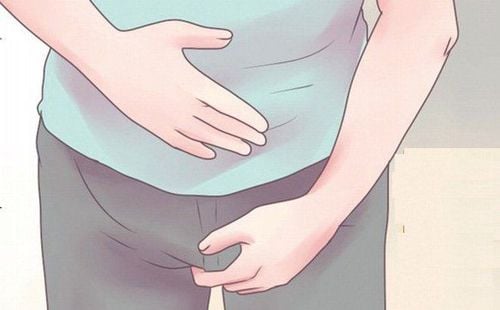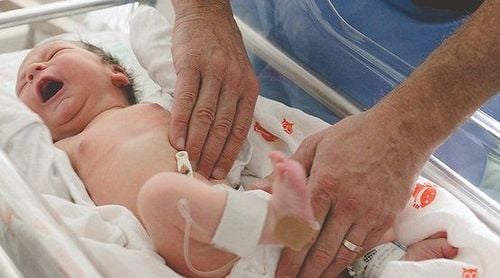This is an automatically translated article.
Hydrocele is not a rare male disease, this disease can lead to infertility in men. Early detection and appropriate treatment are essential. There are two common types of testicular effusion: noncommunicative hydroceles and communicable hydroceles.1. Testicular effusion
Hydrocele is a collection of fluid in one or both scrotum. A hydrocele will almost always be on one side, but it can sometimes happen on both sides of the testicle, causing the testicle to swell or become abnormally large.2. Classification of testicular effusion
There are two common types of testicular effusion: noncommunicative hydroceles and communicable hydroceles.2.1 Testicular hydrocephalus does not communicate The sac containing the testicle remains closed as usual, but the body does not absorb the nutrients inside and the size of the sac does not decrease.
2.2 Communication hydroceles when the baby sleeps at night.
3. Symptoms of testicular effusion

Khu vực vùng bẹn của mình bị đau đớn dữ dội
4. Diagnosis of testicular effusion
First, the doctor conducts an examination of the testicles. The light is passed through the scrotum to help diagnose hydrocele more accurately. If the amount of fluid is large, if the doctor cannot perform an examination with a bronchoscope, he will drain the fluid out by injection, remove the liquid, and make the examination easier.Ultrasound examination of the testicles makes it easier to check the condition of the testicles, ensuring that there will be no unintended cause.
5. Treatment of hydrocele
5.1 Clears spontaneously In infants, hydroceles may disappear spontaneously in about a year, and no treatment is required. Hydroceles in adults usually clear up on their own in about six months.
Ở trẻ sơ sinh bị tràn dịch tinh hoàn có thể biến mất tự động trong thời gian khoảng tầm một năm
5.3 Sclerotherapy This is also called the introduction of a substance that prevents hydroceles from returning immediately after the time of intra-epididymal drainage. This approach is not universal, but is applicable to some individuals who do not respond to surgery.
5.4 Surgery In young children, if the fluid in the scrotum is too large or does not improve over time, surgery may be necessary in some cases. In adults, surgical measures are performed when the type of communication effusion is likely to lead to an inguinal hernia.
At Vinmec Da Nang International Hospital, when performing hydrocele surgery, doctors will combine the technique of sacral anesthesia, also known as epidural anesthesia through the sacral gap.
Local anesthetic blocks the spinal nerve roots located in the hard space and numbs the distribution areas; At the same time, reducing pain for the testicles during and after surgery, this technique affects most of the lower abdomen as well as the lower extremities. The technique of sacral anesthesia is indicated in the surgery of hydrocele in young children, those under 20 kg. .
In addition, regional anesthesia is performed by a team of reputable and experienced doctors such as:
Specialist I Le Trong Binh - Head of General Surgery, General Hospital Vinmec International Faculty Da Nang. Dr. Binh has been intensively trained in Anesthesiology - Resuscitation at Universite de Descartes, Claude Bernard - France and The university of Sydney - Australia
Specialist I Tran Thi Ngat - Anesthesiologist in General Surgery Department - Vinmec Da Nang International General Hospital, with 15 years of experience as an Anesthesiologist.
Please dial HOTLINE for more information or register for an appointment HERE. Download MyVinmec app to make appointments faster and to manage your bookings easily.













